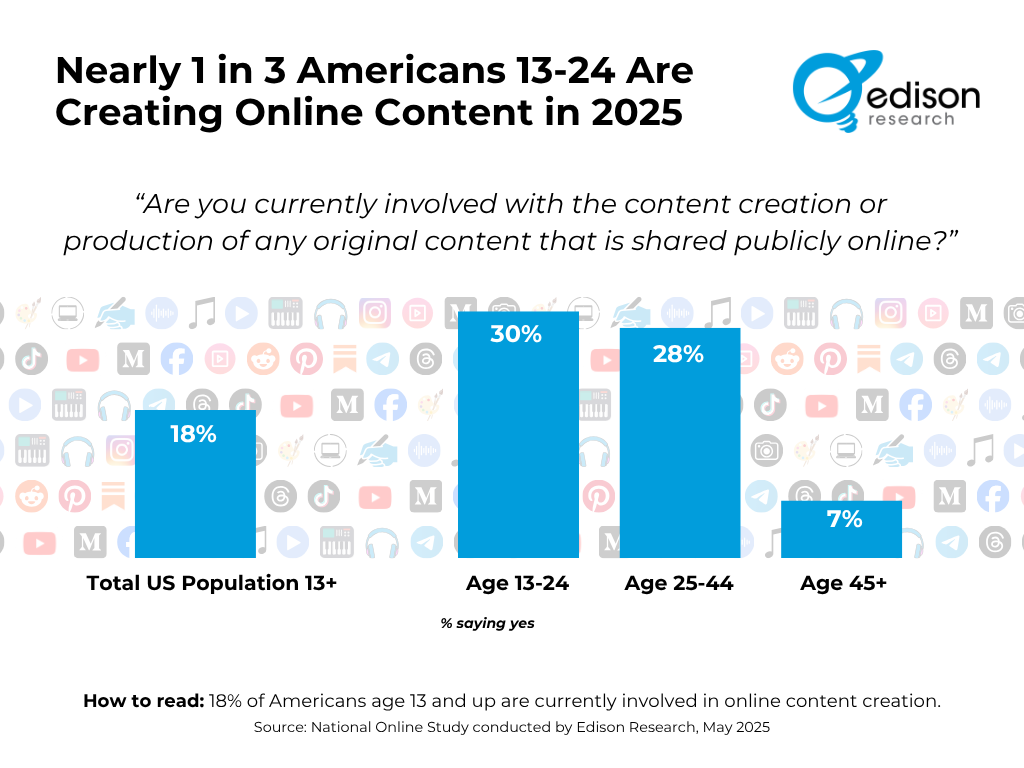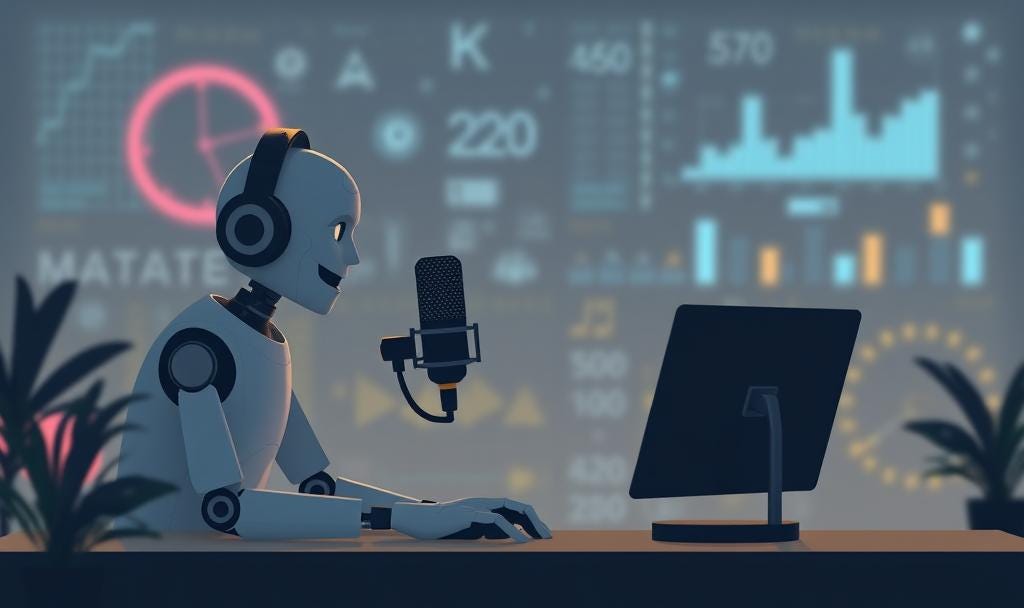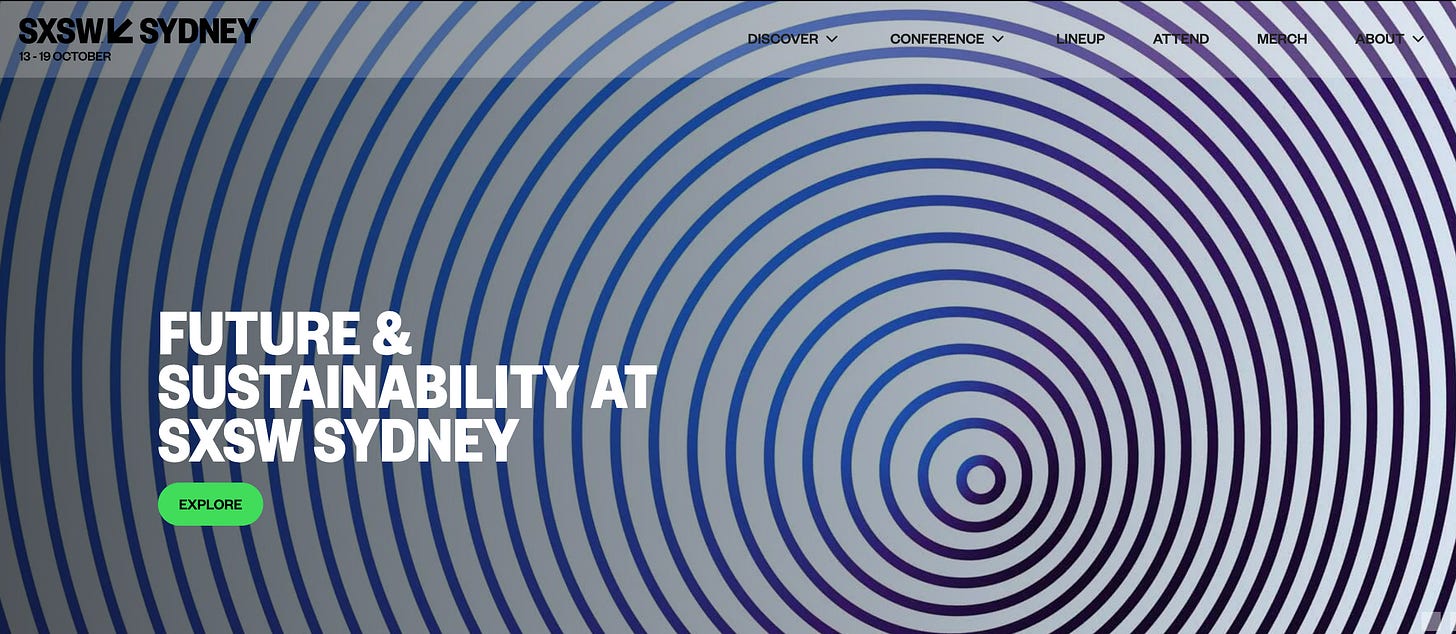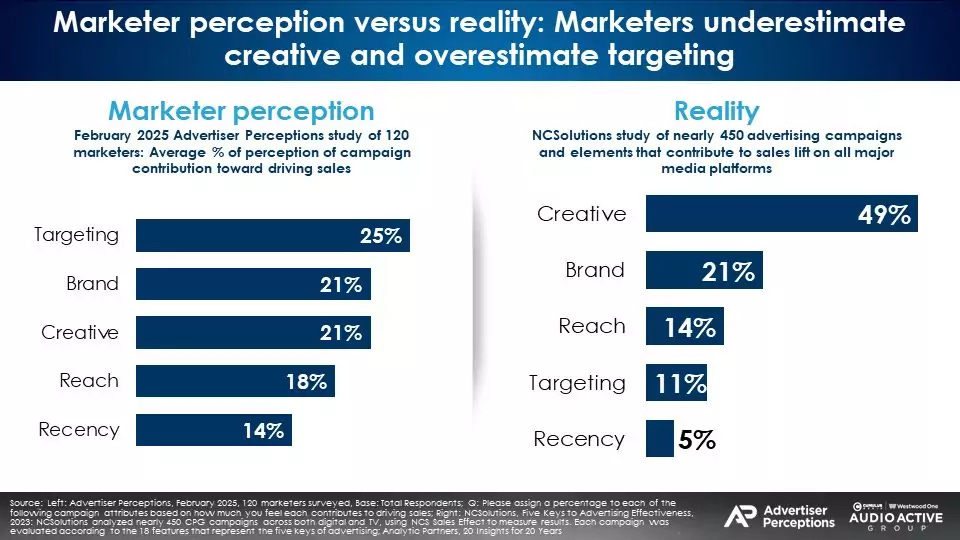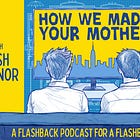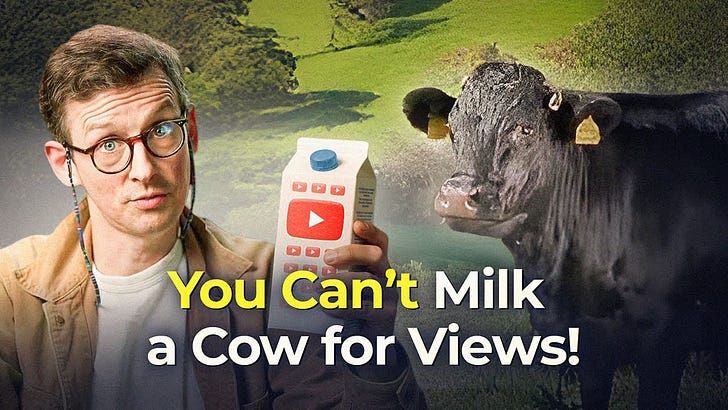Podcasters Miss Opportunity as 42% of Drivers Spend 4+ Hours Weekly in Cars Nearly One-Third of Americans Under 45 Produce Online Content, College Students Reject AI Podcasts, Citing Lack of Human Connection
Did someone forward this to you?
Become one of the more than 1000 valued email subscribers. Find Out More 👈
👋 Hi, Podsky!
We are thrilled to present the latest Weekend edition of Podcast In Brief! And don't worry, our loyal listeners — you'll still get the occasional real-time update!
Thank you to all our free and paid subscribers for continuing to support us. As an independent media organisation, we can only continue our work with the support of readers like you, unlike others who are supported by well-funded organisations.
Your subscription to Podwires will help to fund our operations as an independent media organisation. Becoming a paid subscriber
First time reading? We would be delighted if you would join us – after all, we have over 1,000 intellectually curious readers already! Sign up here.
We want everyone to know about this, so please spread the word by sharing the email with your friends! (copy URL here)
And, as always, send us feedback at editor@podwires.com
Today's reading time is 5 minutes. - Miko Santos
🎙️Today, we've got the inside scoop on:
Podcasters Miss Opportunity as 42% of Drivers Spend 4+ Hours Weekly in Cars
Nearly One-Third of Americans Under 45 Produce Online Content, Survey Shows
College Students Reject AI Podcasts, Citing Lack of Human Connection
Misinformation Concerns Spark Podcast Regulation Debate in Australia
Bonus: Most Podcast Ads Fail Basic Branding Standards, Industry Study Reveals
Elsewhere: Spotify RADAR Creators 2025: Global Podcast Program Expands to 11 Countries with Emerging Talent.
Podwires Job Board : Boston Globe Media - Campaign Manager
Podcasters Miss Opportunity as 42% of Drivers Spend 4+ Hours Weekly in Cars
The Podwires Rundown : Your car just became podcasting’s next battlefield. While we obsess over Spotify wrapped stats and YouTube view counts, there’s a massive listening environment that’s being completely ignored by our industry – and it’s one where people spend four-plus hours every week with nothing but time and a desperate need for good content.
According to a 2025 Gracenote automotive infotainment survey of 4,001 vehicle owners across Germany, Japan, South Korea, and the U.S., conducted between July 28 and August 19, 2025, in-car entertainment is experiencing a critical evolution. The research reveals significant gaps between consumer expectations and current infotainment capabilities, with particular implications for audio content creators and podcasters.
The Key Points:
42% of vehicle owners spend four or more hours per week in their vehicles, yet 56% still listen to AM/FM radio most often, indicating massive untapped potential for on-demand audio
67% of drivers want their in-dash systems to organize all available content regardless of source, but current fragmented experiences mean 21% simply turn off media when they can’t find something
Nearly 50% of vehicle owners would switch to in-dash systems if the experience improved, with 40% already streaming more content than a year ago
22% of drivers want access to more podcasts in their vehicles, ranking fourth behind music (63%), AM/FM radio (29%), and news/talk (28%)
Safety concerns and complex navigation drive 71% of users to rely on phone mirroring, but phone-based solutions can’t deliver the unified, source-agnostic content discovery drivers actually want
Why It Matters: Think about this in simple terms: your potential listeners are stuck in cars for hours every week, actively looking for something to engage with, and our industry has completely failed to make that easy for them. While we celebrate podcast growth, we’re losing the in-car listening war to AM/FM radio – not because radio is better, but because it’s easier. When someone can’t quickly find your show while sitting at a red light, they’re not going to keep trying. They’ll just leave whatever’s playing on, which means traditional radio wins by default. This isn’t about technology limitations anymore; it’s about our failure to prioritize the actual listener experience in one of the most important listening environments that exists.
The Big Picture: For podcasters and producers, this presents both an existential threat and a massive opportunity. The threat? If we don’t solve in-car content discovery, we’ll watch our medium get steamrolled by platforms that do – whether that’s Spotify’s audiobook integration, YouTube’s video dominance, or even traditional radio’s comeback story.
The opportunity? The in-car infotainment market is projected to hit $22.5 billion by 2024 and grow at 11.5% annually through 2030. Automakers are investing heavily in next-gen systems that could finally break down the walled gardens keeping our content siloed.
Here’s what needs to happen: podcasters need to ensure their shows are optimized for voice search and source-agnostic discovery. Producers should consider creating shorter-form content specifically designed for in-car consumption where safety and easy navigation matter most.
The industry needs to advocate for open RSS integration in automotive systems, not just app-specific partnerships that replicate the fragmentation problem. And critically, we need to start treating in-car listening as a first-class distribution channel, not an afterthought. McKinsey found that 38% of U.S. consumers would switch car brands for better in-car tech experiences. That means the opportunity window is open right now – but it won’t stay that way forever.
🛑 BE PODWIRES PAID SUBSCRIBER
As a paid subscriber, you will get all of the following for only $8 a month or $80 a year (or the equivalent in your local currency):
📰 Podwires Job Board - Get the latest Podcast job around the world
🎙️ Podcast Marketplace - 1000 + Independent Podcast Producers ready to help you.
Podwires Superfan - We can keep doing our work with the help of readers like you, unlike other media organisations that get money from big companies.
Nearly One-Third of Americans Under 45 Produce Online Content, Survey Shows
The Podwires Rundown: We talk endlessly about the creator economy like it’s some niche corner of the internet, but here’s the reality check: nearly one in five Americans is already in the game. Edison Research just dropped data showing 18% of Americans 13 and older are actively creating and sharing original content online. That’s not passive scrolling – that’s production. And before you assume it’s just Gen Z kids doing TikTok dances, think again. Among 25-44 year-olds, 28% are creating content. That’s Millennials with mortgages and kids, not just teenagers chasing viral fame. The creator economy isn’t coming – it’s already here, and it’s bigger than most of us realized.
According to Edison Research’s national online survey conducted in May 2025 among Americans aged 13 and older, nearly one-fifth of the U.S. population actively creates and shares original digital content. The research reveals significant generational divides in content creation participation, with younger demographics leading adoption while engagement drops sharply among older age groups. The findings come as the influencer industry approaches a projected $500 billion valuation by 2027, according to Forbes.
The Key Points:
18% of Americans 13+ currently create or produce original content shared publicly online, representing tens of millions of active creators nationwide
30% of Americans aged 13-24 identify as digital content creators, with a nearly identical 28% of those aged 25-44 also producing content
Only 7% of Americans 45+ consider themselves digital creators, marking a dramatic generational divide in content production
The influencer industry is valued at approximately $250 billion as of 2024 and projected to reach $500 billion by 2027
Content creation spans beyond celebrity influencers like Mr. Beast and Charli D’Amelio to include everyday Americans producing original material
Why It Matters: This isn’t about influencers anymore – it’s about infrastructure. When nearly 20% of your potential audience is also actively creating content, the entire media landscape fundamentally changes. For podcasters, this means you’re not just competing with other podcasts or even YouTube videos. You’re competing with your listener’s brother-in-law’s gaming stream, their coworker’s cooking videos, and their neighbor’s true crime commentary. The barrier to entry for content creation has essentially disappeared, which means the bar for quality, discoverability, and audience retention just got exponentially higher. If you think “build it and they will come” ever worked, those days are dead. In a world where 18% of Americans are creators, attention isn’t just scarce – it’s a blood sport.
The Big Picture: For podcasters and producers, these numbers should trigger alarm bells and opportunity sensors simultaneously. The threat is obvious: with 28% of 25-44 year-olds creating content, you’re facing unprecedented competition from the demographic that traditionally had the most disposable income for premium subscriptions and the most time for media consumption.
But here’s the opportunity nobody’s talking about: those 18% of Americans creating content need audio. They need background music, sound effects, interview clips, narration, and branded audio content for their videos and streams. The podcasting industry has spent years perfecting audio storytelling, sound design, and production workflows.
That expertise is suddenly in massive demand from millions of amateur creators who have no idea how to make their content sound professional. Smart podcasters and producers should be thinking about how to productize their audio skills – whether that’s licensing music libraries, offering audio editing services, creating sound effect packages, or building tools that help creators improve their audio quality. Additionally, the sharp decline in content creation among those 45+ (only 7%) suggests this demographic might actually be more receptive to traditional podcasting as they seek content rather than create it.
This could be podcasting’s sweet spot – serve the older audience that wants professionally produced content while simultaneously supplying tools and resources to younger creators who need audio assets. The creator economy isn’t a threat to podcasting if we’re smart enough to become the infrastructure that powers it.
NYU Students Rate AI-Generated Podcasts 2.3 Out of 5 in Class Study
The Podwires Rundown : Steve Goldstein turned his NYU Business of Podcasting class into a focus group, and the results should worry anyone betting on AI-generated podcasts. Students listened to shows from Inception Point AI – a company cranking out hundreds of machine-made episodes weekly – and rated them on a 1-to-5 scale. The average?
According to an October 13, 2025, classroom experiment conducted by Steven Goldstein, founder and CEO of Amplifi Media and instructor of NYU’s Business of Podcasting course, college students reviewing AI-generated podcasts from Inception Point AI gave the content an average rating of 2.3 out of 5. The study, conducted with Tom Webster, Partner at Sounds Profitable, as guest speaker, converted the classroom into a mini focus group examining student reactions to machine-generated podcast content.
The Key Points:
NYU students rated AI-generated podcasts from Inception Point AI an average of 2.3 out of 5, with most scores hovering in the middle or lower ranges
Students identified AI content as synthetic without being told, describing conversations as “flat, too perfect, and oddly emotionless”
Instructional content like How to Train Your Dog or The Science Behind Strength scored higher (4s) because students expected information rather than personality
When asked if AI-generated content matters if information is correct, most students said yes, explaining they listen to podcasts specifically for human voices, quirks, laughter, and tangents
Students said they would rather read factual content than listen to AI-generated versions, describing the experience as “having a Wikipedia page read aloud”
Why It Matters: This classroom experiment captures something industry projections miss: audience rejection isn’t about AI quality – it’s about medium mismatch. Students didn’t fail to appreciate AI podcasts because the technology wasn’t good enough; they rejected it because podcasting is fundamentally a human medium built on connection, not just information delivery. The finding that students would rather read factual content than listen to AI-generated versions is particularly damning for the hundreds of AI podcast startups flooding the market. It suggests there’s no actual demand being solved. Inception Point AI produces hundreds of episodes weekly across 450+ shows, but if the target audience – young, digitally native college students who should theoretically embrace AI – rates the output 2.3 out of 5 and prefers reading to listening, what’s the value proposition? For podcasters worried about AI disruption, this should be reassuring. For investors funding AI podcast companies, this should trigger alarm bells.
The Big Picture: For podcasters and producers, Goldstein’s NYU experiment offers critical insights into AI’s actual threat level versus perceived disruption.
First, the emotional DNA of podcasting – what Goldstein calls “voice, vulnerability, and lived experience” – represents a genuine moat against AI replacement. Students didn’t want better AI; they wanted human hosts with credentials, anecdotes, and opinions. This suggests the industry’s anxiety about AI-generated content may be overblown for personality-driven shows, interview formats, and narrative storytelling.
Second, the distinction students made between instructional content (where AI scored higher) and conversational content (where it failed) reveals AI’s actual viable use case: short, factual explainers where warmth isn’t expected. This suggests a potential collaboration model rather than replacement – using AI for research assistance, show notes, or quick informational segments while preserving human hosts for the core content.
Third, the transparency issue matters enormously. Students said the artwork “announced” the content was synthetic, and knowing shows were AI-made influenced reception. This suggests any podcaster experimenting with AI assistance needs clear disclosure policies, not just for ethical reasons but because audiences will reject content they perceive as inauthentic.
Fourth, the prediction that AI will improve over five years but potentially “blur the line between authentic storytelling and synthetic imitation” points to an upcoming credibility crisis. As AI gets better at mimicking human hosts, the premium on verified human creators will likely increase, not decrease. This means podcasters should be investing now in building direct audience relationships, transparent production processes, and authentic personal brands that can’t be replicated.
Fifth, the finding that students would rather read factual content than listen to AI-generated versions exposes a fundamental flaw in the AI podcast business model: it assumes information delivery is podcasting’s primary function. But as the students made clear, information is readily available in text form. Podcasting’s value proposition is the experience of that information delivered through human personality.
Finally, for the podcast industry broadly, this experiment suggests the real competition isn’t AI-generated podcasts – it’s the continued dominance of reading for quick information consumption. If students prefer reading Wikipedia to listening to AI podcasts, the industry’s challenge remains what it’s always been: making audio content compelling enough to justify the time investment. AI doesn’t solve that problem; it potentially makes it worse by flooding the market with mediocre content that trains audiences to associate podcasts with low-quality information delivery.
Podcast Experts Call for Accountability Standards at SXSW Sydney
The Podwires Rundown: At SXSW Sydney this week, two of Australia’s leading podcast scholars dropped a truth bomb that should make every podcaster uncomfortable: the medium we claimed would democratize media might actually be poisoning it. Monica Attard, who spent 30 years at the ABC and won five Walkley Awards, didn’t mince words. “Chat podcasts, where a few people just talk, with no obligation to verify what they say or to adhere to truth and accuracy, can pollute the public sphere,” she said.
And she’s not wrong. While we’ve been celebrating podcasting’s growth and patting ourselves on the back for disrupting traditional media, we’ve conveniently ignored the fact that we’ve also created a misinformation superhighway with zero guardrails. The question isn’t whether podcasting democratized media – it’s whether we can live with what that democracy actually looks like.
According to a panel discussion at SXSW Sydney on October 13, 2025, reported by RadioInfo Asia’s Steve Ahern, podcast industry experts Monica Attard (UTS Sydney Centre for Media Transition) and Siobhan McHugh (podcast studies scholar and producer) raised concerns about accountability, editorial standards, and misinformation in podcasting. The session, moderated by Sarah Gilbert from Impact Studios and UTS Sydney, examined whether podcasting has fulfilled its democratic promise or created new challenges for public discourse.
The Key Points:
Monica Attard, a five-time Walkley Award winner, distinguished between narrative podcasts with editorial standards and “chat podcasts” that lack verification obligations, calling the latter a potential pollutant of public discourse
Siobhan McHugh cited the original intention of podcasting as creating “an open medium, not to make money,” criticizing platforms like Spotify for undermining this with paywalled content
Unlike licensed broadcasters, podcasts typically fall outside regulatory frameworks in most countries, creating accountability gaps that traditional media faces through regulatory systems
High-quality investigative podcasts like The Greatest Menace cost an estimated $35,000-$40,000 per episode hour, representing only 10% of traditional documentary costs but still requiring significant funding
The panel called for increased podcast reviews, transparent contact information from producers, published codes of conduct, and greater professional accountability as alternatives to formal regulation
Why It Matters:This isn’t abstract academic hand-wringing – this is the podcasting industry’s existential crisis coming into focus. When Monica Attard calls out the difference between professional podcasts and “chatcasts,” she’s articulating what many in the industry know but won’t say publicly: we’ve built a medium where Joe Rogan can classify himself as “comedy” while wielding massive political influence, where Alex Jones can spread conspiracy theories without consequence, and where millions of listeners can’t distinguish between verified journalism and entertaining bullshit. For podcasters, this matters because the trust deficit created by bad actors eventually contaminates everyone. When audiences can’t tell the difference between a meticulously fact-checked investigative series and three bros spouting opinions, the entire medium’s credibility erodes. And here’s the uncomfortable part: traditional media’s loss of trust – especially with younger audiences – handed podcasting this opportunity. If we squander it by refusing to develop professional standards, we’ll lose that trust even faster than newspapers did.
The Big Picture: For podcasters and producers, this SXSW Sydney panel exposes uncomfortable realities that demand immediate action. The industry stands at a crossroads between maintaining the open, democratic ideals that made podcasting revolutionary and acknowledging that zero accountability creates genuine harm.
Attard and McHugh aren’t calling for government regulation – they understand that’s nearly impossible given podcasting’s borderless, unlicensed nature. Instead, they’re proposing market-based and cultural solutions that podcasters can implement now: publish your contact information, develop and display a code of ethics, make yourself accountable, and build transparency into your process.
For producers working on narrative or investigative content, McHugh’s example of The Greatest Menace demonstrates the economic challenge clearly – $35,000-$40,000 per episode hour, even at 10% of traditional documentary costs, still requires substantial funding that doesn’t exist in most podcasting business models. This suggests the industry needs to advocate for government or philanthropic support for investigative journalism podcasting, similar to public broadcasting models.
The call for more podcast reviews and critiques represents a critical infrastructure gap. McHugh’s surprise that Australia lacks regular podcast reviews points to an opportunity: professional podcast criticism could serve as a quality filter, helping audiences identify trustworthy shows while creating reputational incentives for podcasters to maintain standards.
The distinction the panel made between empowering marginalized voices (citing examples from Arabic, Myanmar, and Chinese LGBTIQ podcasts) and enabling misinformation campaigns reveals podcasting’s dual nature – the same openness that allows a taboo-breaking show like EIB to discuss women’s bodies in Arabic also permits conspiracy theorists to operate without accountability.
For the podcasting industry, the smartest move isn’t waiting for regulation or hoping the problem solves itself. It’s proactively building credibility infrastructure: professional associations with voluntary codes of conduct, transparent funding disclosures, fact-checking partnerships, and media literacy initiatives that help audiences evaluate podcast quality. Otherwise, we risk discovering that democratizing media without democratizing media literacy just means everyone gets an equal voice in polluting the public sphere.
PRESENTED BY PODWIRES MARKETPLACE
Hire Top Independent Podcast Producers for Your Business
Podcasting is a powerful way to grow business, and Marketplace Podwires is here to assist you in the easy hiring of top-rated independent podcast producers. Be it branded podcasts that share your products with the entire world or internal series aimed at engaging and energizing your teams, our expert producers can craft stories that meet any brief and bring more personality to your brand's voice. Begin with Marketplace Podwires, and find a dream producer for your project today!
Most Podcast Ads Fail Basic Branding Standards, Industry Study Reveals
The Podwires Rundown: Your podcast ad is terrible, and I can prove it. Pierre Bouvard, Chief Insights Officer at Cumulus Media | Westwood One, just published research that should terrify every brand buying podcast ads: most campaigns feature too many copy points, say the brand name too late (or not enough), and rely on rational messaging that generates almost zero long-term profit.
According to research published October 13, 2025, by Pierre Bouvard, Chief Insights Officer of the Cumulus Media | Westwood One Audio Active Group, most audio advertising suffers from fundamental creative flaws that undermine sales effectiveness. The analysis, drawing on studies from Nielsen, Effie, System1, Kantar Millward Brown, and other marketing effectiveness firms, identifies specific tactical errors in podcast and radio advertising while providing evidence-based best practices for improving creative performance.
The Key Points:
Nielsen research shows creative drives 50% of sales effect, yet Advertiser Perceptions data reveals marketers significantly underestimate creative impact while overstating targeting importance
Effie and System1 research demonstrates narrowly targeted campaigns with rational messaging generate minimal profit even after three years, while broadly targeted emotion-based campaigns produce maximum long-term returns
Most podcast ads violate basic branding principles: brands appear too late in ads (20-25 seconds), are mentioned too infrequently (rule of thumb: 5 mentions in 30 seconds, 9+ in 60 seconds), and lack category anchoring
Nielsen podcast brand effect studies confirm greater brand mention frequency correlates directly with stronger brand equity, association, and advertising recall
System1 analysis of hundreds of thousands of ads shows right-brain creative elements (emotion, humor, sonic assets) drive strongest market share growth, while campaigns using humor specifically outperform serious messaging
Why It Matters: This isn’t creative theory – this is money being set on fire. When advertisers spend 20 seconds of a podcast ad explaining a problem before mentioning the brand, they’ve already lost half their audience. When they cram seven features into 30 seconds instead of saying the brand name five times, they’re paying for impressions that generate zero brand recall. The research from Effie and System1 is particularly damning: the dotted red line showing rational, narrowly targeted campaigns demonstrates these approaches produce almost no profit impact even after three years of running. Meanwhile, emotion-based campaigns with broad targeting show profit growth that keeps climbing. For podcast advertisers specifically, this means the industry’s obsession with precise targeting and feature-heavy direct response copy is leaving massive amounts of money on the table. The uncomfortable truth is that most podcast ads are structured exactly backwards – they’re optimized for immediate clicks rather than long-term profit, they’re targeted narrowly rather than broadly, and they’re rational rather than emotional.
The Big Picture:
For podcasters and producers, Bouvard’s research exposes critical gaps between industry practice and marketing science that directly impact revenue sustainability.
The findings suggest several immediate actions:
First, educate your advertisers. When brands come to you with 10-point feature lists and demand precision targeting, you’re not doing them a favor by accommodating – you’re helping them waste money. Share this research. Explain that Nielsen data proves creative drives 50% of sales effect while targeting drives far less than advertisers believe.
Second, implement creative standards. Require brand mentions in the first two seconds. Insist on category anchoring (”Kardia, the heart monitoring app” not just “Kardia”). Limit copy points to one main message. These aren’t creative preferences – they’re evidence-based practices that increase advertiser ROI, which means more renewals and longer contracts.
Third, consider developing sonic branding packages. The System1/TikTok research showing sonic assets in the first two seconds boost brand awareness represents a productizable service. Offer advertisers consistent music beds, jingles, or sonic logos across all their reads.
Fourth, embrace entertainment. The System1 data demonstrating humor drives market share growth challenges the serious, feature-heavy tone dominating podcast advertising. Host-read ads already have personality – lean into that rather than forcing hosts to recite benefit lists.
Fifth, push back on the direct-response mindset. The Effie research showing rational, narrowly targeted campaigns generate minimal long-term profit directly contradicts the performance marketing orthodoxy that’s dominated podcast advertising. Yes, attribution is easier with promo codes and specific URLs, but if those campaigns don’t build brand equity, you’re training advertisers to view podcasting as a purely transactional channel with no lasting value.
For the industry’s long-term health, we need advertisers thinking about podcasts the way System1 and Effie recommend: broad reach, emotional creative, long-term brand building. Finally, the finding from Kantar Millward Brown that fewer messages increase recall while more messages decrease it should fundamentally change how podcast ad copy gets written.
Christopher Smith’s observation that “a radio spot is not a hotel – you don’t have to fill all the space” applies directly to 60-second podcast reads that try cramming in every possible benefit. One clear message, repeated with emotion and strong branding, will outperform seven rational points every time. The broader implication: podcasting’s creative standards have lagged behind its distribution growth. We’ve scaled the medium without scaling creative quality, and that gap is costing advertisers – and ultimately podcasters – real money.
MORE FROM PODWIRES:
🎙️ EVERYTHING ELSE IN PODCASTING TODAY
Spotify RADAR Creators 2025: Global Podcast Program Expands to 11 Countries with Emerging Talent. Spotify expanded its RADAR Creators program in 2025 to support emerging podcast talent across 11 countries including the US, Spain, Australia, Indonesia, Colombia, Philippines, Italy, Germany, France, and Sweden, providing marketing and promotional resources to help new creators reach wider audiences in audio and video formats.
Headliner Launches Automatic Clip Titling Feature as Social Media Platforms Phase Out Hashtags. Headliner released Automatic Clip Titling, an AI-powered feature that automatically generates smart titles and metadata for podcast video clips to improve content discovery on social platforms like TikTok, Instagram, and YouTube as hashtags are phased out in favor of algorithm-based content indexing.
Samsung TV Plus Launches Spotify’s First FAST Channel Featuring The Ringer’s Video Podcasts. Samsung TV Plus partnered with Spotify to launch The Ringer from Spotify, marking Spotify’s first-ever FAST (Free Ad-Supported Streaming Television) channel, featuring curated video podcasts including Bill Simmons’ Book of Basketball 2.0, The Rewatchables, and The Big Picture available subscription-free on Samsung devices.
The Verge Launches Ad-Free Podcast Feeds for Subscribers Including Decoder and Vergecast. The Verge launched ad-free versions of its podcasts including Decoder, The Vergecast, and Version History for subscribers at no additional cost, responding to high demand from its subscriber base that pays $40 annually for access to ad-free content, exclusive newsletters, and full-text RSS feeds.
Podcast Rankings Shift: Mel Robbins Falls, Charlie Kirk Surges in October. The October podcast rankings just dropped, and they tell a story that should make every podcaster rethink their strategy. After September’s massive spike, it’s cooled considerably, falling completely out of the top 10 for audio reach and monthly downloads despite still holding strong at #2 for downloads per episode.
🚨 Stay on top of your deadlines with our weekly-updated calendar of fellowships, grants, training opportunities and podcasting events. If your organisation has a fellowship, grant or event to share, just 👉 fill out this form or want to contribute an article 👉 click here or reply to this message.
🎧 PODCASTING JOB OPPORTUNITIES
Boston Globe Media - Campaign Manager
CBC/Radio-Canada - Senior Producer, News Podcasts, (English Services), (Hybrid)
TED Conferences - Podcast Producer
Quill - Producer and Paid Marketing Specialist
The Daily Wire - Vice President, Content Operations
👀 Hiring? Or looking for a new job
Grow your business through podcasting. Marketplace Podwires connects you with skilled producers who can craft compelling stories that align with your brand. Start your podcast journey today! 👈

📖 I appreciate you taking the time to read! See you in the next issue. Got a question or criticism? Just click on Reply. We can talk while we are here.
✍️ Give us a press release and a good-sized landscape photo. Make sure it's newsworthy. Send press releases to editor@podwires.com or click here. Editorially, we may rewrite headlines and descriptions.
📬 Sponsor us and get your brand in front of thousands of Independent Podcast Producers and podcasters. Email us at sales@podwires.com for more information or as personal supporters via Patreon, as your contributions help us enhance the experiences of all our users.
🖊️We are delighted to hear from our subscribers! We would be happy to publish your testimonial if you have found our newsletter to be helpful or if you have a success story to share. 👉 Post a Testimonial: https://testimonial.to/podwires
🚀 We are here to help you succeed! Fill out a 5 minute survey and tell us more about your business and yourself. These questions will help us better understand you and promote your business as part of our mission. It’s a win-win!
🚨 Did someone forward this to you?
Become one of the more than 1000 valued email subscribers. Find Out More 👈
We’d love to share what our Podwires readers have been saying!
We’re so grateful to our previous Podwires advertisers!
Podwires is here because of our incredible partners’ unwavering support. The Podwires readers receive journalism free of financial and political influence. If you found this valuable, consider Restacking so more people can see it. Get together with them today.
Thanks to the support of our readers, we can continue to provide free reporting. If you can, please choose to support The Podwires







